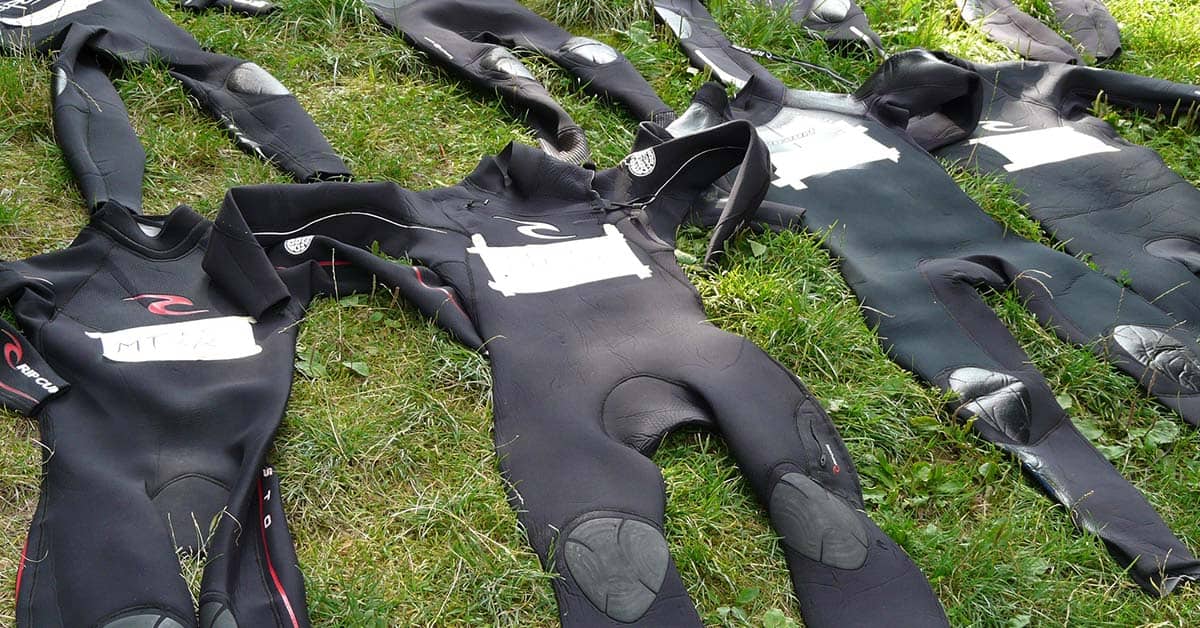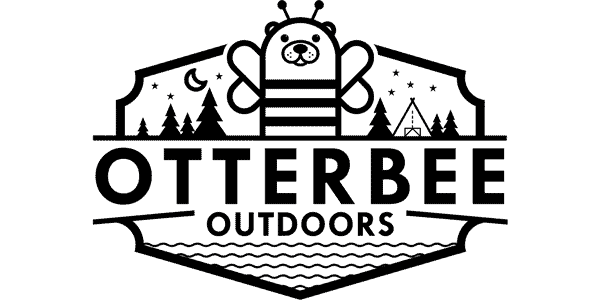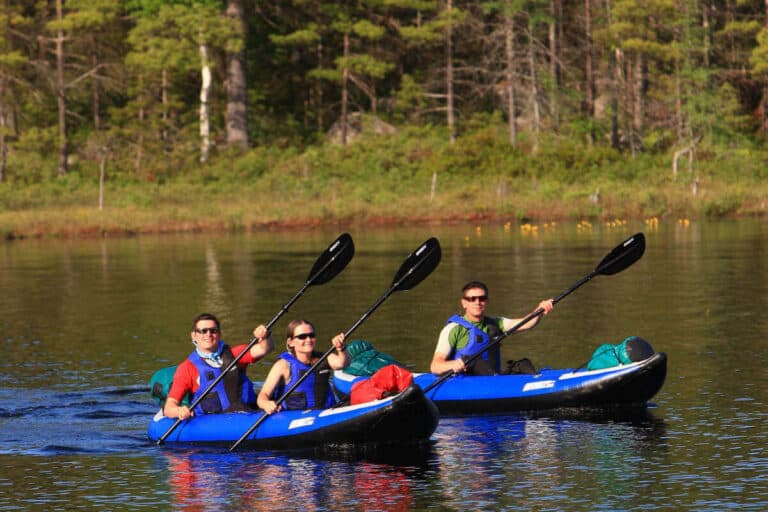Disclosure: I am compensated for purchases made through some links on this site. Click for details.
If you take part in water sports or you’re interested in being more involved in water sports like kayaking, you’ve probably worn neoprene clothing or seen it used. My first experience was in a dive class over 30 years ago. Neoprene material has been around since 1930 but that doesn’t mean it’s entirely safe.
Let’s take a closer look at neoprene and answer the following questions and more:
- Is neoprene waterproof?
- Is neoprene safe to be worn?
- Is neoprene safe for the environment?
What Is Neoprene?

Polychloroprene or neoprene is a synthetic rubber that doesn’t absorb water. It is produced by the free radical polymerization of chloroprene. Originally developed in 1930 by by scientists working for the DuPont company, neoprene was highly significant to wartime efforts due to the depletion of natural rubber during World War II.
DuPonts efforts changeed the tragectory of the war by providing a synthetic alternative to rubber with excellent insulation abilities that could be used to make everything from wetsuits to Jeep tires.
Neoprene is actually a proprietary trade name of DuPont that has become generalized in its use. The more appropriate name, polychloroprene, isn’t used as often.
Neoprene has some advantages over natural rubber…
- Stronger
- More Durable
- Better heat retention due to gas bubbles created in the product during the manufacturing process
- Greater resistance to degradation
- Offers greater flexibility over a wide temperature range
- More water resistant
- Chemical resistance to oil and solvents
- Greater resistance to burning with a burn point is around 260°C (500°F)
Until the end of WWII’s war efforts, neoprene was exclusively manufactured for military use. Once it came to the general market, uses for the public were developed such as wet suits and other neoprene clothing and accessories for water sports.
Is Neoprene Waterproof?
Yes… Neoprene is a waterproof material produced in one of two different types, closed-cell or open-cell.
When used in manufacturing wetsuits, these cells improve the material’s insulating properties to hold in body heat.
Closed-cell neoprene fabric is made through a high-pressure manufacturing process of foams polychloroprene with tiny bubbles. These bubbles make neoprene foam more buoyant and improve its insulating capability.
Open-cell neoprene fabric has tiny bubbles too but they are cut open in the manufaturing of the fabric. The open-cells are like tiny suction cups that cause the neoprene to stick to the skin and make a watertight seal.
What Gas Is Used to Create Bubbles in Neoprene?
Four reasons why nitrogen gas is most often used to create bubbles in the manufacturing of neoprene foam:
- Nitrogen gas is an inert gas that does not generate a chemical reaction with polychloroprene during production.
- The use of nitrogen improves the thermal insulating properties of neoprene foam by maintaining pressure longer than compressed air in the fluctuating temperatures of many water sports.
- Nitrogen gas is flame resistant.
- Nitrogen gas can be used in a wide range of processing temperatures.
Is Neoprene Safe to Wear?

Neoprene is used to develop fabrics for the production of water sports clothing like wetsuits, waders for fishing, other accessories like knee braces, insulated water bottle sleeves, boat seat covers, and so much more.
Is neoprene toxic?
Neoprene is not considered toxic, however, it is produced by the polymerization of chloroprene. Occupational exposure to chloroprene is hazardous.
According to Proposition 65 of the California government, levels of chloroprene in most neoprene fabrics are very low and unlikely to cause exposure.
Chloroprene Hazard Summary
Hazards of short-term and long-term exposure to chloroprene according to the US Environmental Protection Agency (EPA):
- Short-term exposure to chloroprene in high concentrations can cause headache, dizziness, lightheadedness, loss of consciousness, nausea, gastrointestinal disorders, irritability, giddiness, fatigue, insomnia, respiratory irritation, heart palpitations, chest pains, dermatitis, temporary loss of hair, conjunctivitis, and corneal necrosis.
- Long-term exposure to chloroprene can cause irritability, giddiness, fatigue, dermatitis, hair loss, chest pains, and damage to the liver, kidneys, lungs, cardiovascular system, reproductive system, and immune system.
- Chloroprene has been classified as carcinogenic. It increased the risk of liver cancer and tumors in a variety of organs.
- Chloroprene being a flammable liquid is also a fire hazard.
Is Neoprene Carcinogenic?
Even though neoprene is produced by the polymerization of chloroprene which is carcinogenic, neoprene has not been classified as a carcinogen by the EPA and the use of neoprene products is not likely to cause exposure to chloroprene due to the extremely low levels found in most neoprene.
Do Neoprene Products Have a Prop 65 Warning?
Yes, neoprene products are required to carry the Prop 65 Warning because neoprene is made using chloroprene. Neoprene products contain this and other chemicals on California’s Proposition 65 List which identifies carcinogens and other chemicals known to cause birth defects or reproductive harm.
The Prop 65 Warning is intended to improve the awareness of California residents to their overall chemical exposure from all products in their use. The warning is not intended to identify a particular product as being harmful or unsafe.
Is Neoprene Safe for Skin Contact?
According to an article in the American Journal of Occupational Therapy entitled Neoprene Splinting: Dermatological Issues, neoprene poses two dermatological risks, allergic contact dermatitis (ACD) and miliaria rubra. These reactions are attributed to accelerants used in the manufacturing process.
How do You Know if You Are Allergic to Neoprene?
If you suspect that you are having an allergic reaction to neoprene, look for the following symptoms after contact and discontinue use. Once you develop a neoprene allergy, continued use can increase sensitivities.
Neoprene-related allergic contact dermatitis symptoms include:
- Itching
- Swelling
- Skin eruptions
- Hemorrhages
Neoprene-related miliaria rubra symptoms include:
- small, red, elevated, inflammatory papules
- tingling and burning
Hypersensitivity to neoprene is rare though its incidence may increase as neoprene use in products increases.
How Long Do Neoprene Allergies Last?
Symptoms from neoprene allergic reactions can last anywhere from 2 – 4 weeks after exposure. If you have these or other allergic reactions when using neoprene products, see a dermatologist for your personalized course of treatment.
Does Neoprene Contain Latex?
Neoprene does not contain latex and is considered a safe alternative to latex for those with allergies. Neoprene products can, however, contain latex and can cause allergic reactions.
Neoprene Rash and Chafing
Not all skin reactions to neoprene are allergic responses. Wetsuit rash and chafing are quite common. These are irritations caused by the wetsuit rubbing against your skin and although wetsuits are vital in cold water sports the cold weather can dry your skin increasing the likelihood of irritation.
Anti-chafing balm like Body Glide or wearing a baselayer or rash guard is often effective in protecting your skin.
For more check out the article on the prevention and treatment of wetsuit rash and chafing.
Reduced Efficiency of Neoprene Over Time
Neoprene products break down and lose efficiency in serving their function whether it be a knee brace or the insulating properties of a wetsuit. Over time, UV rays cause degradation, neoprene stretches, seams weaken, and bubbles in the foam become compressed.
Deterioration of neoprene can be a safety issue when the neoprene product can no longer serve the user as intended like keeping a kayaker warm in cold water.
Is Neoprene Safe for the Environment?

No, neoprene is non-biodegradable, toxic when burned, and not environmentally safe to produce.
There is petroleum-based neoprene and limestone neoprene. Both methods of production create polychloroprene chips through the polymerization of chloroprene which is used to produce neoprene fabrics. Chloroprene as discussed earlier is hazardous.
Neoprene production contributes to climate change and toxic emissions from plants harm both animal and human life.
Additionally, petroleum and limestone are both finite resources. Oil-based products take a heavy impact on the environment and limestone is removed from the earth with the use of fossil fuels.
Limestone initially sounds better but in the end, one isn’t really any more friendly on the environment than the other.
Please recycle neoprene products. These non-biodegradable products can have a future life outside a landfill.
Alternatives to Neoprene
What can be used instead of neoprene?
There are coldwater clothes outside those made of neoprene.
Yulex
Yulex produces sustainable plant-based rubber materials made from Forest Stewardship Council (FSC) certified natural rubber. Yulex and Patagonia have joined together to create neoprene-free wetsuits, vests, gloves, mittens, socks, booties, hoods, and caps.
I’m personally impressed with Patagonia for removing neoprene from its product line and replacing it with Yulex-based products. Their commitment to the environment and transparency is refreshing.
If you are looking for a neoprene-free wetsuit, look no further than Patagonia’s Yulex Wetsuits and other neoprene-free products.
Benefits of Yulex vs. Neoprene
The benefits of Yulex versus neoprene according to Yulex and Patagonia Works:
- Yulex neoprene-free wetsuits perform as well or better than neoprene wetsuits.
- The main polymer used in producing Yulex is produced by trees, not factories. The use of natural rubber reduces CO2 emissions by 80 percent in comparison to neoprene manufacturing.
- Natural rubber is blended with a small amount of chlorine-free synthetic rubber to increase the product’s durability, strength, and resistance to ozone and UV degradation.
- Yulex’s process of making closed-cell foam rubber materials creates a non-sensitizing material by removing over 99% of impurities.
Conclusion
Is neoprene waterproof, yes. It is also generally considered safe to wear but it is not safe for the environment.
Once you know how neoprene is made and its negative effect on the environment, it’s hard not to look for alternative clothing for staying warm in cold water and in cold weather.







